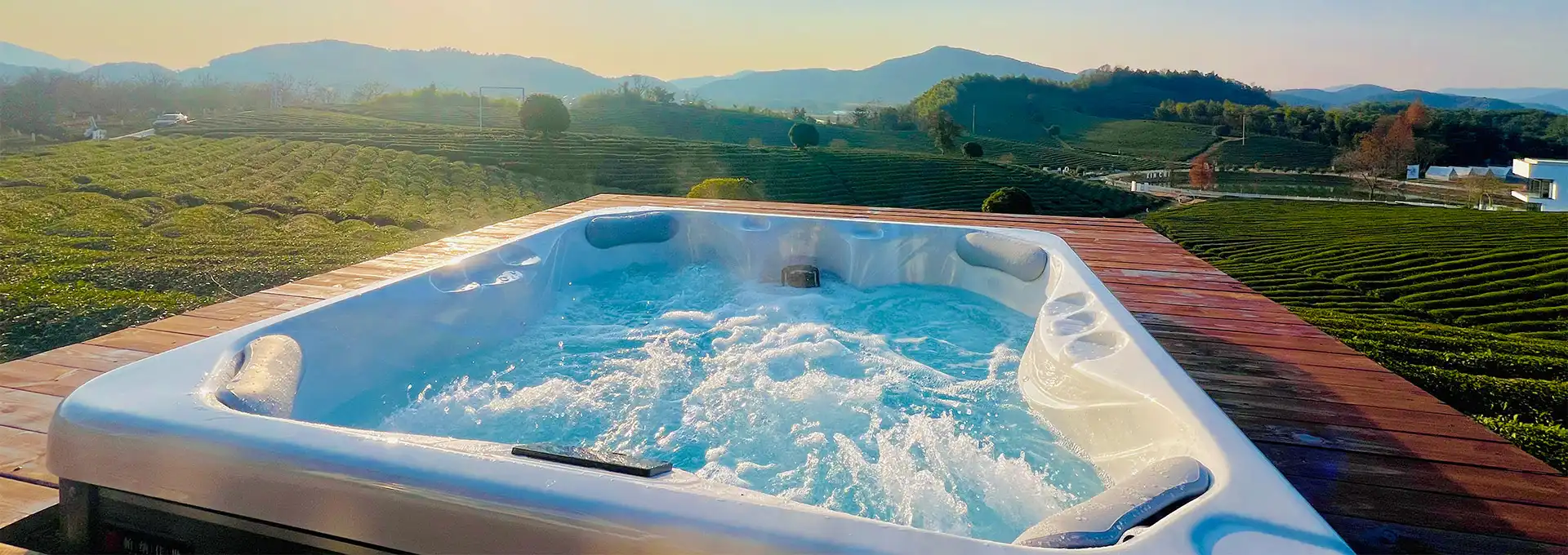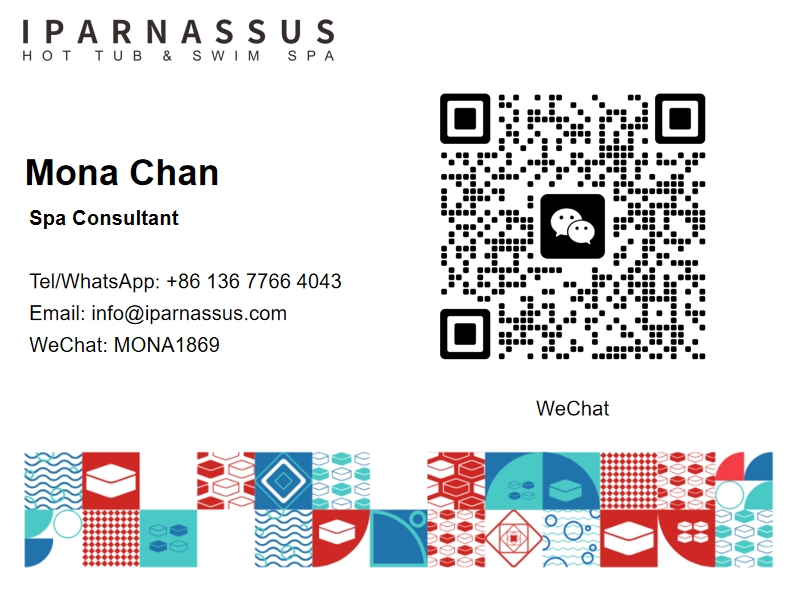Maximize Recovery: Integrating Plunge Cold Tub with Breathing Techniques
2025-07-23 17:08:04
The combination of cold water immersion and strategic breathing methods represents one of the most powerful approaches to enhancing recovery and building resilience. While a Plunge Cold Tub alone delivers remarkable physiological benefits, integrating specific breathing techniques amplifies these effects exponentially. This synergistic approach transforms what could be an overwhelming experience into a controlled, therapeutic practice that maximizes recovery potential while building mental fortitude. Professional athletes, wellness practitioners, and biohackers worldwide are discovering that proper breathing protocols can turn cold exposure into a gateway for enhanced performance, accelerated healing, and profound stress management capabilities.
What Breathing Techniques Work Best with a Plunge Cold Tub?
The Wim Hof Method Integration
The Wim Hof breathing technique has revolutionized how practitioners approach cold exposure, making the Plunge Cold Tub experience more manageable and therapeutically effective. This method involves controlled hyperventilation followed by breath retention, which alkalizes the blood and increases oxygen saturation before entering the cold water. When combined with your Plunge Cold Tub session, this breathing pattern helps maintain composure and extends your tolerance to cold temperatures. The technique involves taking 30-40 deep breaths, exhaling completely, then holding your breath for as long as comfortable before entering the cold water. This preparation activates your sympathetic nervous system in a controlled manner, allowing you to remain calm and focused during the intense cold exposure. Practitioners report that this combination significantly reduces the shock response typically associated with cold immersion while enhancing the overall recovery benefits.
Box Breathing for Cold Water Control
Box breathing, also known as tactical breathing, provides exceptional control and stability when used in conjunction with a Plunge Cold Tub session. This technique involves breathing in for four counts, holding for four counts, exhaling for four counts, and holding empty for four counts. When practiced consistently during cold exposure, box breathing helps regulate your autonomic nervous system and maintains steady oxygen delivery to your muscles and organs. The rhythmic nature of this breathing pattern creates a meditative state that transforms the Plunge Cold Tub experience from a stressful ordeal into a mindful practice. This controlled breathing approach helps prevent hyperventilation, reduces anxiety, and allows you to stay in the cold water longer, maximizing the therapeutic benefits. Many users find that mastering box breathing in their Plunge Cold Tub translates to better stress management and emotional regulation in daily life situations.
Alternate Nostril Breathing for Enhanced Recovery
Alternate nostril breathing, or Nadi Shodhana, offers a sophisticated approach to enhancing recovery when combined with Plunge Cold Tub therapy. This ancient yogic technique involves closing one nostril while breathing through the other, then switching sides in a rhythmic pattern. When practiced before and after cold immersion, this breathing method helps balance your nervous system and optimize the recovery process. The technique activates both hemispheres of the brain, promoting mental clarity and emotional equilibrium while preparing your body for the cold exposure challenge. During your Plunge Cold Tub session, modified versions of this breathing can help maintain focus and reduce the intensity of the cold shock response. Post-immersion practice of alternate nostril breathing accelerates the transition back to homeostasis, helping your body integrate the beneficial stress response more effectively and extending the positive effects of your cold therapy session.
How Does Breathing Enhance Cold Exposure Benefits?
Optimized Oxygen Delivery and Cellular Function
Strategic breathing techniques dramatically enhance the cellular benefits achieved through Plunge Cold Tub therapy by optimizing oxygen delivery and waste removal at the tissue level. Controlled breathing patterns increase oxygen saturation in your bloodstream while simultaneously improving carbon dioxide elimination, creating optimal conditions for cellular recovery and adaptation. When you combine proper breathing with cold exposure in your Plunge Cold Tub, you enhance mitochondrial function and increase the production of beneficial proteins like norepinephrine and brain-derived neurotrophic factor. The controlled stress of cold immersion, when paired with strategic breathing, triggers hormetic responses that strengthen cellular resilience and improve overall metabolic efficiency. This combination also enhances the production of heat shock proteins, which protect cells from damage and promote longevity, making your recovery sessions more effective and sustainable over time.
Nervous System Regulation and Stress Adaptation
The integration of breathing techniques with Plunge Cold Tub therapy creates powerful nervous system adaptations that extend far beyond the immediate session. Controlled breathing activates the parasympathetic nervous system, counterbalancing the initial sympathetic response triggered by cold exposure. This creates a unique training environment where your nervous system learns to remain calm under stress while still benefiting from the adaptive responses cold therapy provides. Regular practice of this combination improves heart rate variability, a key marker of nervous system health and stress resilience. The breathing techniques help you maintain control over your physiological responses, teaching your autonomic nervous system to toggle between states of activation and relaxation more efficiently. This enhanced nervous system flexibility translates to better stress management, improved sleep quality, and greater emotional stability in challenging situations outside of your Plunge Cold Tub practice.
Enhanced Hormonal Response and Recovery Acceleration
The synergistic effect of breathing techniques and Plunge Cold Tub therapy significantly amplifies beneficial hormonal responses that drive recovery and adaptation. Controlled breathing patterns help optimize the release of growth hormone, testosterone, and other anabolic hormones while modulating cortisol levels to prevent excessive stress responses. The combination creates an ideal hormonal environment for muscle recovery, tissue repair, and cognitive enhancement. Strategic breathing during cold exposure also enhances the release of endorphins and other mood-regulating neurotransmitters, creating a natural high that can last for hours after your session. This hormonal optimization accelerates recovery from physical training, reduces inflammation markers, and promotes better sleep architecture. The breathing-enhanced Plunge Cold Tub practice also improves insulin sensitivity and glucose metabolism, contributing to better energy regulation and body composition over time.
Can Breathing Techniques Reduce Cold Shock Response?
Progressive Adaptation and Shock Mitigation
Implementing specific breathing protocols can dramatically reduce the initial shock response associated with Plunge Cold Tub entry, making the practice more accessible and sustainable for beginners and experienced practitioners alike. The key lies in using preparatory breathing techniques that gradually condition your nervous system to handle temperature extremes without triggering panic responses. Pre-immersion breathing exercises that involve controlled hyperventilation followed by breath holds help desensitize your body to the sensation of physiological stress, making the transition into cold water feel more manageable. This progressive adaptation approach allows you to build tolerance gradually while maintaining safety and control throughout your Plunge Cold Tub sessions. Regular practice of these techniques creates neurological pathways that associate cold exposure with relaxation rather than distress, fundamentally changing your relationship with challenging stimuli and building resilience that extends to other areas of life.
Physiological Control and Safety Enhancement
Proper breathing techniques serve as essential safety mechanisms during Plunge Cold Tub sessions by maintaining physiological control and preventing dangerous responses to cold shock. Controlled breathing patterns help regulate heart rate and blood pressure, reducing the cardiovascular stress associated with sudden temperature changes. The techniques also prevent hyperventilation and the associated lightheadedness or panic that can occur during cold immersion. By maintaining steady, rhythmic breathing, you ensure adequate oxygen delivery to vital organs while keeping your nervous system in a controlled state. This physiological control allows you to extend your time in the Plunge Cold Tub safely, maximizing therapeutic benefits while minimizing risks. The breathing techniques also help you recognize your limits and exit the water before reaching dangerous levels of cold exposure, making the practice both more effective and safer for long-term use.
Mental Resilience and Confidence Building
The integration of breathing techniques with Plunge Cold Tub therapy builds exceptional mental resilience by providing tools to overcome the psychological barriers associated with cold exposure. Controlled breathing serves as an anchor point, giving you something specific to focus on when the intensity of cold immersion feels overwhelming. This focus technique transforms the experience from one of endurance to one of active participation and control. Regular practice builds confidence in your ability to handle challenging situations, as you develop trust in your capacity to remain calm and controlled under stress. The breathing techniques create a sense of agency and mastery over your physiological responses, which translates to improved self-efficacy in other demanding situations. This mental training aspect of the breathing-enhanced Plunge Cold Tub practice develops leadership qualities, decision-making skills under pressure, and overall psychological resilience that benefits all aspects of personal and professional life.
Conclusion
Integrating breathing techniques with Plunge Cold Tub therapy creates a synergistic approach that maximizes recovery benefits while building both physical and mental resilience. This powerful combination optimizes cellular function, regulates nervous system responses, and reduces cold shock while enhancing the therapeutic potential of cold exposure. The practice transforms challenging cold immersion into a controlled, meditative experience that delivers profound physiological and psychological benefits.
Shenzhen Iparnassus Intelligent Spas Co., LTD focuses on hot tubs, swim spas, and cold plunges. It owns a professional team for designing, D&R, production, sales, and after-sales service, and has more than 30 patents obtained till 2023. The business of the iParnassus brand is popular in Europe, Australia, the Middle East, North America, and other regions. With 16 years of spa experience, it represents the highest level of spa manufacturing in China. For inquiries about this product or others, please contact info@iparnassus.com for dedicated service.
References
1. Kox, M., van Eijk, L. T., Zwaag, J., van den Wildenberg, J., Sweep, F. C., van der Hoeven, J. G., & Pickkers, P. (2014). Voluntary activation of the sympathetic nervous system and attenuation of the innate immune response in humans. Proceedings of the National Academy of Sciences, 111(20), 7379-7384.
2. Brown, R. P., & Gerbarg, P. L. (2005). Sudarshan kriya yogic breathing in the treatment of stress, anxiety, and depression: Part I—neurophysiologic model. Journal of Alternative & Complementary Medicine, 11(1), 189-201.
3. Zaccaro, A., Piarulli, A., Laurino, M., Garbella, E., Menicucci, D., Neri, B., & Gemignani, A. (2018). How breath-control can change your life: A systematic review on psycho-physiological correlates of slow breathing. Frontiers in Human Neuroscience, 12, 353.
4. Tipton, M. J., Collier, N., Massey, H., Corbett, J., & Harper, M. (2017). Cold water immersion: Kill or cure? Experimental Physiology, 102(11), 1335-1355.
5. Ma, X., Yue, Z. Q., Gong, Z. Q., Zhang, H., Duan, N. Y., Shi, Y. T., ... & Li, Y. F. (2017). The effect of diaphragmatic breathing on attention, negative affect and stress in healthy adults. Frontiers in Psychology, 8, 874.
6. Buijze, G. A., Sierevelt, I. N., van der Heijden, B. C., Dijkgraaf, M. G., & Frings-Dresen, M. H. (2016). The effect of cold showering on health and work: A randomized controlled trial. PLoS One, 11(9), e0161749.



